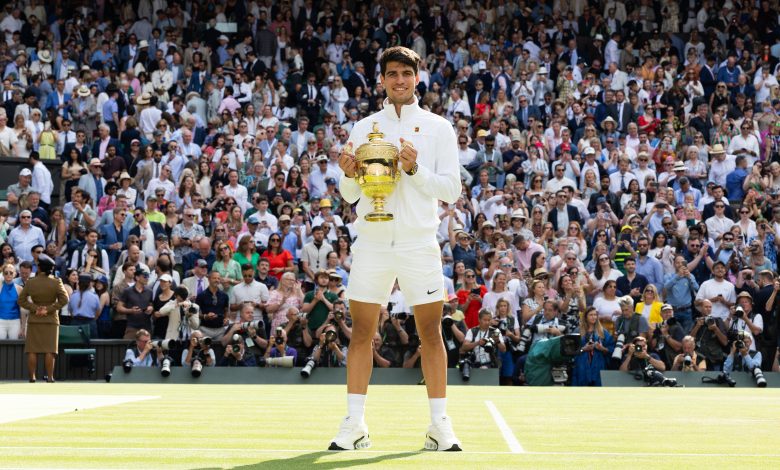
I’ve always thought that I’d love to be a tennis player. Especially recently, whilst watching Wimbledon, I sat on the sofa wishing I was holding the coveted strings. I thought that being a pro tennis player must be a dream. Yet, after some research, I’ve realised it might not be.
For players ranked outside the top 100, it’s more like a rollercoaster with no brakes. These athletes, grinding away on the Challenger and Futures tours, live a life far from the spotlight of Grand Slams. It’s a world of tight budgets, endless flights, lonely hotel rooms, and the kind of mental grit that’d make most of us buckle.
Tennis Players don’t have it easy…
Scraping By: The Money Struggle
Let’s talk cash, because it’s the elephant in the room. Tennis is a sport where the money flows like champagne for the elite, but for those outside the top 100? It’s more like tap water. A study from the International Journal of Sport Policy and Politics says the top 1% of men’s players snag 60% of prize money, and for women, it’s 51%.
That leaves the rest fighting for crumbs, with a small percentage actually making a profit. Former player Conor Niland, in The Guardian, spilled the tea: an ITF semi-final win might net you $480 after taxes. That’s barely enough for a flight to the next gig. Many players moonlight as coaches or string rackets to survive. It’s like trying to climb Everest with a piggy bank.
Globe-Trotting Grind: The Travel Toll
You’re hopping time zones every week, lugging your gear through airports, and crashing in budget hotels for 11 months a year. That’s the reality for these players. Niland called it “relentless” in The Guardian, sharing tales of booking flights in hotel lobbies after a loss or taking a 7-hour taxi in Uzbekistan to save cash. It’s not just tiring; it’s a full-on assault on your body and mind. You’re jet-lagged, eating strange food, and playing on courts that change with every stop. No wonder they’re knackered before the first serve. It’s like running a marathon while juggling.
A DREAM REALIZED! 🏆🇮🇹
— 365Scores (@365Scores) July 13, 2025
Jannik Sinner defeats Carlos Alcaraz in an EPIC Wimbledon final to claim his first-ever title pic.twitter.com/WzVIrIHLHl
Solo on the Road: The Loneliness Game
Tennis is lonely, especially on the lower tours. With over 2,000 players battling it out on the Futures circuit, you’re surrounded by strangers in locker rooms, and the vibe’s not exactly friendly. Players avoid bonding because everyone’s fighting for the same spots, and rejection stings. You’re away from home, missing birthdays, weddings, and just chilling with mates. Those vague match schedules, like “sixth match after 10am, not before 3pm,” leave you stuck in limbo, alone with your thoughts.
The Weight of It All: Mental Pressure
The pressure to succeed is a beast. These players carry the hopes of their families, coaches, and their own dreams, knowing every match could make or break their careers. A Taylor & Francis study found 15% of players report mental health struggles—think anxiety, depression, or even eating disorders. With no steady paycheck, they often play through injuries to keep their rankings, based on a brutal 52-week rolling system. There’s the constant fear of failure, like a shadow that never leaves. Every loss feels like a punch to the gut, and the stakes are sky-high.

Keeping the Faith: Resilience and Hope
Despite the grind, these players keep at it, fueled by passion and the faint hope of breaking through. Some scrape together sponsorships or pick up side gigs, while others lean on online communities for support. The ATP and WTA are stepping up with more mental health resources, but the lower ranks still get short shrift. Players cherish the journey, even if they never crack the top 100.
Life outside the top 100 is a test of endurance, heart, and sheer stubbornness. These players aren’t just battling opponents; they’re fighting a system that favors the elite, a lifestyle that isolates, and a mind that sometimes doubts. Yet, they lace up, hit the court, and dream big. It’s a reminder that tennis isn’t just about flashy forehands or Grand Slam glory – it’s about the human stories behind every rally.
| Financial Struggles | Top 1% take 60% (men) and 51% (women) of prize money; only 1.8% of men, 3.1% of women profit |
| Travel Fatigue | 11-month season, constant time zone shifts, budget travel like 7-hour taxis. |
| Mental Pressure | 15% report mental health issues; fear of failure looms large |
| Loneliness | Over 2,000 players on Futures tour, competitive vibe limits connections |
| Structural Issues | No salaries, 52-week rankings push players to play injured |
By Nicky Helfgott / @NickyHelfgott1 on Twitter (X)
Follow all the latest tennis and US Open news here on 365Scores!



